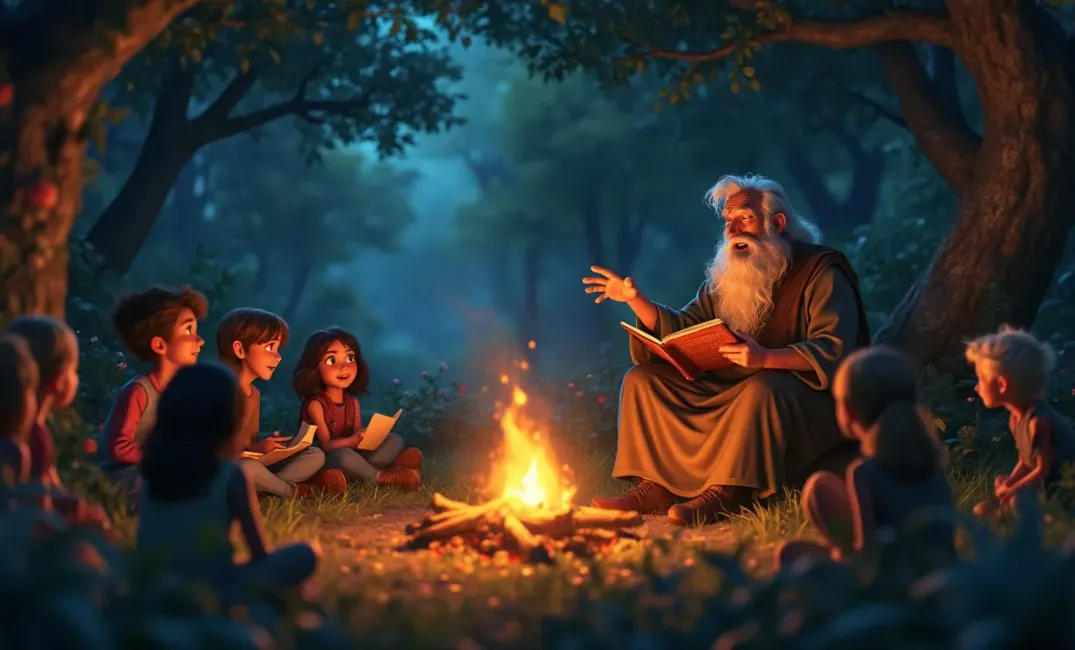Introduction: The Heartbeat of Cultural Narratives
"Folklore is not a thing of the past but a living reality that echoes continuously from generation to generation." — Alan Honick
Fables and folklore form the bedrock of human culture, embodying the merging of imagination and reality to shape societies and their core beliefs. Passed through generations, they represent shared experiences, moral lessons, and cultural values. Although these tales vary in form across different cultures, the essence of storytelling remains a steadfast constant that endures over time.
This exploration delves into the significance of folklore and fables in human history. It reveals their power in forging cultural identity, imparting wisdom, and sustaining tradition amidst change. By examining the rich diversity and transformative influence of these narratives, we explore the timeless impact of human imagination on the understanding of the world.
The Origins and Universal Nature of Fables and Folklore
Ancestors and Oral Traditions
- Roots in Oral Cultures: Before the advent of writing, oral traditions sustained cultural continuity. Stories passed verbally reinforced communal bonds, spread wisdom, and preserved collective histories, acting as informal educational systems.
- Mythical Archetypes: Many cultures share archetypal themes, such as creation myths, hero journeys, and cautionary tales, demonstrating universal questions and fears that transcend cultural boundaries.
The Confluence of Imagination and Morality
- Moral Instruction: Fables often embody moral lessons, like Aesop's tales, which used animals as protagonists to illustrate human virtues and vices. These stories offer universal truths reflecting societal values and ethical considerations.
- Imaginative Expression: Folklore embraces the supernatural, intertwining the fantastical with the mundane, fostering creativity and expanding possibilities beyond observable reality.
Cross-Cultural Tapestries: Shared Themes and Divergent Narratives
Influences and Adaptations Across Civilizations
- Narrative Cross-Pollination: Folktales traveled along trade routes, adapted to local contexts while retaining core themes. The Silk Road, for example, facilitated the exchange of stories like the "Panchatantra" across Asia and the Middle East.
- Localized Interpretations: While shared motifs exist, regional versions reflect distinct cultural values, environments, and historical experiences. The "Cinderella" story is one such tale, with versions found in diverse cultures, each with unique cultural adaptations.
Folklore as Identity and Resistance
- Cultural Identity: Folklore often reflects regional identities and echoes social norms, reinforcing cultural heritage and community cohesion. For example, Native American folklore underscores the fundamental connection to nature and reinforces tribal cohesion.
- Resistance and Resilience: In oppressive contexts, folklore becomes a tool of resistance, preserving cultural identity through allegory. African American folktales like those of Br'er Rabbit encoded subversive messages of adaptability and cleverness in the face of enslavement.
The Evolution of Folkloric Ensembles: Transformations Over Time
The Written Word: Preserving Oral Narratives
- Literary Preservation: As writing systems developed, oral narratives were encapsulated in texts, safeguarding tales from oblivion. Collections like the "Brothers Grimm" fairy tales immortalized European folk narratives in written form.
- Revitalization in Literature: Writers have drawn inspiration from folklore, weaving its themes into literature and illuminating cultural mirror reflections. Works like "One Thousand and One Nights" capture the mystique of Middle Eastern storytelling traditions.
Modern Interpretations and Revivals
- Cinematic Adaptations: Cinema has brought folklore to new audiences, reimagining timeless tales through contemporary lenses. Disney's animated classics reinterpret stories, making them accessible to global audiences.
- Digital Storytelling: The digital era provides new platforms for folklore adaptation, with virtual reality and interactive media inviting participatory storytelling that honors tradition while fostering innovation.
Folklore's Role in Education and Society
Pedagogical Tools and Cultural Transmission
- Educational Relevance: Folklore remains a vital pedagogical tool, nurturing cognitive development, teaching societal values, and fostering empathy through shared narratives. Its integration into curricula encourages critical thinking and cultural appreciation.
- Cultural Mentorship: Elder storytellers play pivotal roles, connecting ancestors' voices with youth, bridging generational gaps, and imparting wisdom that shapes individual and collective identities.
Societal Impact and Community Cohesion
- Shaping Social Dynamics: Folktales illustrate social dynamics and cultural expectations, offering blueprints for behavior while exploring moral dichotomies.
- Community Celebrations: Rituals and festivals centered around folklore invoke collective memories, reinforcing communal bonds and celebrating shared heritage despite shifting societal landscapes.
The Universal Language of Folktales: Lessons for Tomorrow
Transcending Temporal Boundaries
- The Timelessness of Tales: Folktales persist as repositories of human experience, transcending time and context to coexist in the modern world. They adapt, evolve, and reflect societal changes without relinquishing cultural essence.
- Global Understanding and Unity: As cultural ambassadors, folktales promote intercultural exchange and global solidarity, inviting diverse audiences to engage with both familiar and foreign narratives.
Ensuring Folklore's Legacy
- Preservation Initiatives: Efforts to document and preserve endangered folk narratives face challenges as globalization influences cultural homogenization. However, digital archives, community projects, and interdisciplinary studies contribute to cultural preservation for future generations.
- Sustaining Imaginative Discovery: Folklore continues to foster imaginative exploration, encouraging societies to envision potential futures grounded in creativity, resilience, and diversity.
Conclusion: Embracing the Heritage of Human Storytelling
"We are all storytellers. We are all listeners. We are all keepers of each other's stories." — Henrietta Mears
Folklore and fables, woven into the fabric of humanity's shared experience, serve as a collective repository of wisdom, identity, and imagination. They form an intricate tapestry capturing the essence of diverse cultures, constants in an ever-evolving world.
Embracing these narratives honors the art of storytelling and the inherent creativity that fuels human innovation. As harbingers of both history and possibility, folktales inspire us to confront the unknown with grace, offering insights into ourselves and each other.
May the tales of yesteryears continue to illuminate pathways of understanding, forging unity amid diversity and preserving our shared heritage for generations yet to come. Through these stories, humanity finds its voice—a voice that resonates with the timeless essence of dreams and reality interwoven as one.
COMMUNITY COHESION, CULTURAL IDENTITY, CULTURAL PRESERVATION, FOLKLORE, FABLES, STORYTELLING, ORAL TRADITIONS

